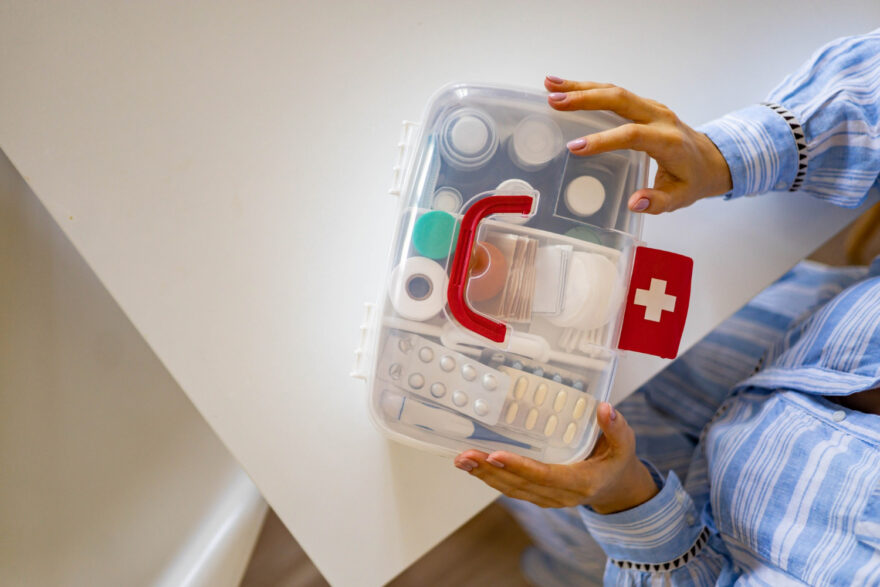No one plans for accidents to happen at home, but they do occur more often than we’d like. From accidental cuts and scrapes to unexpected slips and falls, minor injuries are a part of life. Knowing how to respond quickly and effectively with proper first aid can make a big difference in recovery and comfort.
Every household should have essential supplies ready to handle these everyday mishaps. Being prepared with the right items ensures that you can promptly address injuries and prevent them from becoming worse. Once equipped, understanding how to treat common home injuries can turn you into the go-to person during emergencies.
In this blog, we’ll dive into practical first aid techniques that everyone should know. These skills are invaluable, offering peace of mind and assurance that you’ll be prepared to handle minor injuries safely. Whether it’s dealing with a simple scrape or managing an unexpected allergic reaction, being ready can help keep your household safe and healthy.
Essential First Aid Supplies for Home Use
Having a well-stocked first aid kit at home is crucial for addressing common injuries promptly. Knowing what to include in your kit helps ensure you’re prepared for most minor emergencies. Here are the essential items every home first aid kit should contain:
– Adhesive Bandages: Various sizes of bandages help cover cuts and scrapes, preventing infection and promoting healing.
– Sterile Gauze and Tape: These are useful for larger wounds that require covering and protection.
– Antiseptic Wipes: They clean wounds effectively, reducing the risk of infections.
– Antibiotic Ointment: Applying it to cuts and scrapes helps prevent infection and encourage healing.
– Tweezers: Useful for removing splinters or small debris from wounds.
– Scissors: Handy for emergency trimming tape, gauze, or clothes.
– Instant Cold Pack: It helps reduce swelling and pain from injuries.
– Elastic Bandage: Useful for supporting sprains and strains.
– Pain Relievers: Over-the-counter medications can alleviate pain and reduce inflammation.
Regularly check the kit to replace used or expired items. Personalize it with additional supplies you may specifically need, like allergy medications or epi-pens. Having these supplies ready gives you confidence and control over most home mishaps.
Treating Cuts, Scrapes, and Burns
Minor cuts, scrapes, and burns are part of everyday life, but knowing how to treat them can prevent complications and speed up recovery. With proper care, you can easily manage these injuries at home.
Cuts and Scrapes:
1. Clean the Area: Use lukewarm water to rinse the wound, removing dirt and debris.
2. Apply Antiseptic: Use wipes or solutions to disinfect the area and kill germs.
3. Protect the Wound: Cover it with a bandage or sterile gauze to prevent dirt and bacteria from entering.
4. Monitor for Infection: Watch for signs like redness, swelling, or pus, which require professional attention.
Burns:
1. Cool the Burn: Run cool (not cold) water over the burn for several minutes. Avoid ice, as it can cause more damage.
2. Cover the Burn: Use a sterile, non-stick bandage to protect the area.
3. Avoid Ointments: Do not apply grease or oily substances which can hold heat in the skin.
Pay close attention to healing cuts, scrapes, and burns. If there are any unusual changes or increased pain, seek medical advice. Knowing how to effectively address these injuries ensures quicker recovery and helps prevent future problems.
Managing Sprains, Strains, and Fractures
Sprains, strains, and fractures are common injuries, especially during physical activities or accidents. Knowing how to handle these injuries at home can prevent further damage and aid recovery.
Sprains and Strains:
1. Rest: Avoid using the injured area to prevent aggravating the injury.
2. Ice: Apply an ice pack wrapped in a cloth for 15-20 minutes every few hours to reduce swelling.
3. Compression: Use an elastic bandage to wrap the area, reducing swelling and providing support.
4. Elevation: Keep the injured part elevated above heart level to minimize swelling.
Fractures:
– Immobilize: Keep the injured limb as still as possible to avoid further injury.
– Support: Use a splint or soft material to support the area until professional help arrives.
– Seek Medical Attention: Contact medical services for further evaluation and treatment.
Monitor the injury closely. Persistent pain, swelling, or inability to move indicates the need for medical evaluation. Knowing these steps ensures you effectively manage sprains, strains, and fractures while waiting for professional care.
Handling Breathing Emergencies and Allergic Reactions
Breathing emergencies and allergic reactions can occur unexpectedly. Quick and appropriate actions are important to protect health and ensure safety.
Breathing Emergencies:
1. Stay Calm: Encourage the person to stay relaxed to avoid panic, which can worsen the situation.
2. Assess the Situation: Check for any visible obstructions and ensure the airway remains open.
3. Assist with Breathing: If trained, administer rescue breaths. Call 911 immediately for help.
Allergic Reactions:
– Recognize Symptoms: Look for signs like swelling, itching, rashes, and difficulty breathing.
– Administer Medication: Use an epinephrine injector if available and trained to do so.
– Seek Immediate Help: Call emergency services, especially if breathing difficulty persists.
Timely action and awareness are crucial in managing these emergencies. Understanding these steps can make a life-saving difference in situations where quick decision-making is needed.
Conclusion
Being prepared to handle common home injuries provides confidence and peace of mind. Understanding and applying first aid principles empowers you to manage emergencies effectively, providing critical care when it’s needed most. Whether dealing with minor cuts or serious fractures, knowing the right steps ensures timely intervention, aiding in quicker recovery and reducing complications.
At Citywide CPR, we recognize the importance of being prepared for emergencies. Consider enrolling in one of our CPR and first aid courses to enhance your skills and readiness. With our comprehensive training programs, you can confidently handle unexpected situations, ensuring the safety of your family and loved ones. Join us to learn life-saving techniques and become an essential resource in your household.






